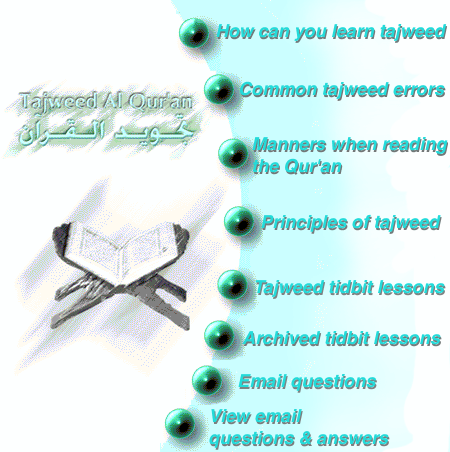|
|

copyright © 2002, abouttajweed.com, all rights reserved |
Question The 3
cases of nabr in special words are because there is an alif at the end of a
word that indicates two and when reading through that alif has to be dropped
because of a following sukoon so an accent is there to indicate that
dropped alif; if that is right so far then my question is: it seems that
there are other places in the Qur'an where there is such an alif followed by a
letter with sukoon. I'm just wondering why these or at least this one
here
Answer Wa
iyyakum wa-l muslimeen. Masha’ Allah this is a good question.
Yes the accent or
|